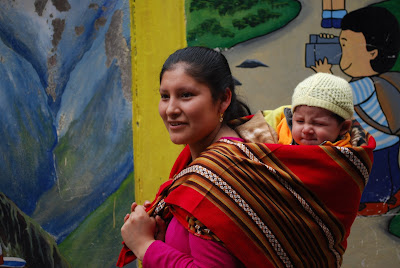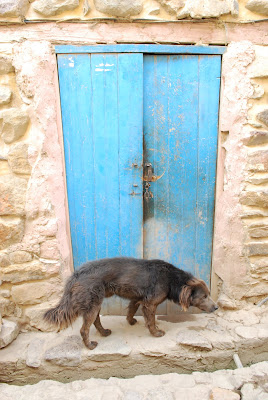mouth of a serpent
spouting water from a stream
zigzaging uphill
Lost in the maze of the Pisac
feria, I turn a corner into an open passage, relieved that I have found my way out of the labyrinth, and nearly stumble into the mouth of a serpent at my feet. The realistic stone head is spouting water into a little pool lined with round stones. A water channel set into diamond paving stones and edged with triangular mosaics of small round pebbles comprises its body. The channel runs zigzag down
a very long, narrow street. A
triciclo is parked not too far away, between the channel and the adobe wall, and a woman in traditional costume, with a striped
k'eperina over one shoulder, is walking toward me up the hill. I stand and stare at the serpent for a long time. There is a mystery here which I cannot grasp. My eyes tell me that the water is spouting
up from the serpent's mouth but the street into with the water channel is sloping
down. It is like a painting by M.C. Escher. My confused mind scrambles for a logical explanation of this apparent contradiction. There must be a pump under the serpent's head that forces water up from a well or cistern, and the channel is merely for draining rainwater down the hill, as I have seen on many other sloped streets. But the mind-boggling impression remains. Perhaps this is its purpose, to take the mind beyond, into the realm of Amaru, the Cosmic Serpent.












































